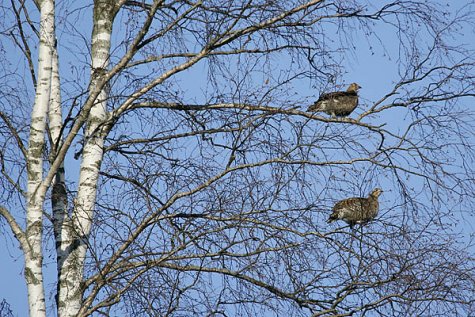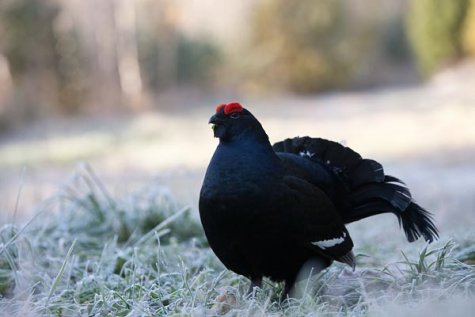Grouse in the winter landscape
|
Black grouse |
Teder | Tetrao tetrix |
Last weekend the grouse should have been on their mating game (lek) grounds inspecting them, but the cold nights and frosty trees made the birds stay in hiding. And where better than in a snowdrift: safe at night and much warmer. Snow burrows are dug out with the feet; there can be up to a metre and a half of passages. Digging in powdery snow is made easier for the grouse by the horny fringelike outgrowths that form in winter on the sides of the toes. Obviously they are needed to make moving in the snow more comfortable. Nostrils are feather-covered and damp condenses there, which in turn makes for less ice formation in the snow burrows.
In winter grouse keep in flocks. Living so, threats are noticed easier: bare deciduous trees, and especially birches, whose buds and catkins are used for food, don’t offer much hiding opportunities.










